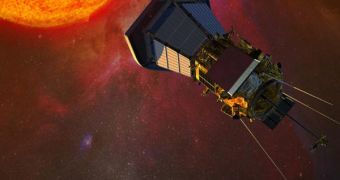In an announcement officials at the American space agency made yesterday, September 2, they revealed that NASA has approved a new mission to analyze the Sun, called Solar Probe Plus (SPP).
The new spacecraft will be about the size of a car, and will include a variety of instruments that will allow it to analyze the star as it's getting closer.
Once launched, no later than 2018, it will be set on a direct collision course with the upper layers of the solar atmosphere, Space reports.
Undoubtedly, the scorching temperatures will destroy it before a physical impact, but the wealth of data that will be collected during this event would be invaluable, researchers say.
The ambitious new mission has thus far been approved to carry five scientific experiments. During its journey, the spacecraft will be subjected to high temperatures and powerful radiation waves.
“This project allows humanity's ingenuity to go where no spacecraft has ever gone before. For the very first time, we'll be able to touch, taste and smell our Sun." explains scientist Lika Guhathakurta.
The expert is a program scientist with the NASA Solar Probe Plus. It is believed that the spacecraft will have to face temperatures exceeding 2,550 degrees Fahrenheit (1,399 degrees Celsius).
This mission was selected out of 13 proposals for Solar Probe Plus, which the American space agency received back in 2009. Five of them have been selected for further study.
“The experiments selected for Solar Probe Plus are specifically designed to solve two key questions of solar physics: Why is the Sun's outer atmosphere so much hotter than the Sun's visible surface, and what propels the solar wind that affects Earth and our solar system?” says Dick Fisher.
“We've been struggling with these questions for decades, and this mission should finally provide those answers,” adds the official, who is the director of the Heliophysics Division at NASA.
The experiments that have been approved to go on the future mission include the Solar Wind Electrons Alphas and Protons Investigation, the Wife-field Imager, the Fields Experiment, The Integrated Science Investigation of the Sun, and the Heliospheric Origins with Solar Probe Plus.
NASA is developing this mission under its Living with a Star Program, which also saw the recent launch of the Solar Dynamics Observatory (SDO)
The goal of the program is to understand the way the Sun works, so that its effects on society and lfie on Earth can be predicted and mitigated, if the need arises.

 14 DAY TRIAL //
14 DAY TRIAL //